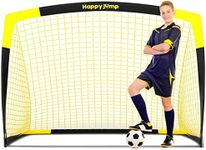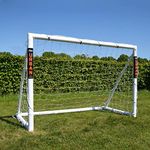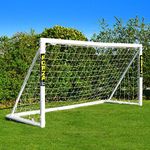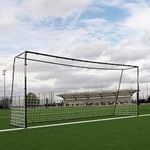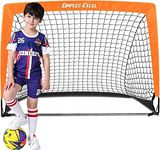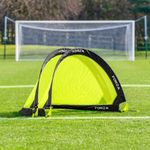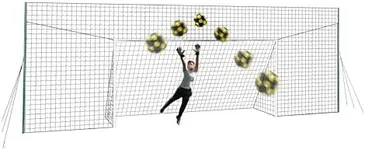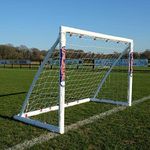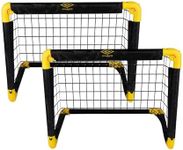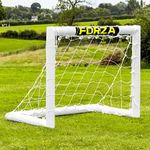Buying Guide for the Best Football Goals
Choosing the right football goal is essential for ensuring a fun and safe playing experience. Whether you're setting up a goal for a backyard game, training session, or competitive match, there are several key specifications to consider. Understanding these specs will help you select a goal that meets your needs and enhances your football experience.SizeThe size of the football goal is crucial as it determines the playing experience and suitability for different age groups and skill levels. Goals come in various sizes, from small portable goals for kids to full-size goals for professional matches. For younger children or casual play, smaller goals (around 4x6 feet) are ideal. For older kids and training purposes, medium-sized goals (6x12 feet) work well. Full-size goals (8x24 feet) are best for competitive matches and adult players. Consider the age and skill level of the players when choosing the size.
MaterialThe material of the football goal affects its durability and portability. Common materials include plastic, steel, and aluminum. Plastic goals are lightweight and easy to move, making them suitable for casual play and younger children. Steel goals are more durable and stable, ideal for regular use and training. Aluminum goals offer a balance of durability and portability, making them suitable for both training and competitive matches. Choose a material based on how often the goal will be used and where it will be set up.
PortabilityPortability refers to how easy it is to move and set up the football goal. Portable goals are typically lightweight and can be easily assembled and disassembled, making them perfect for backyard games and temporary setups. Fixed goals are more stable and durable but require a permanent location. If you need a goal that can be moved frequently, opt for a portable model. For a more permanent setup, a fixed goal is a better choice.
NettingThe netting of the football goal is important for catching the ball and ensuring it doesn't pass through the goal. Netting can be made from various materials such as nylon, polyethylene, or polyester. Nylon nets are durable and resistant to weather, making them suitable for outdoor use. Polyethylene nets are lightweight and affordable, ideal for casual play. Polyester nets offer a balance of durability and affordability. Consider the frequency of use and weather conditions when choosing the netting material.
AssemblyThe ease of assembly is an important factor, especially if the goal will be set up and taken down frequently. Some goals come with simple snap-together frames, while others require more complex assembly with tools. If you need a goal that can be quickly set up for impromptu games, look for one with easy assembly features. For a more permanent setup, a goal with a more robust assembly process may be suitable.
Weather ResistanceWeather resistance is crucial for outdoor football goals that will be exposed to the elements. Goals with weather-resistant coatings or materials will last longer and maintain their quality despite rain, sun, and wind. Steel and aluminum goals often come with weather-resistant coatings, while plastic goals may be less durable in harsh weather. If the goal will be used outdoors frequently, choose one with good weather resistance to ensure longevity.
